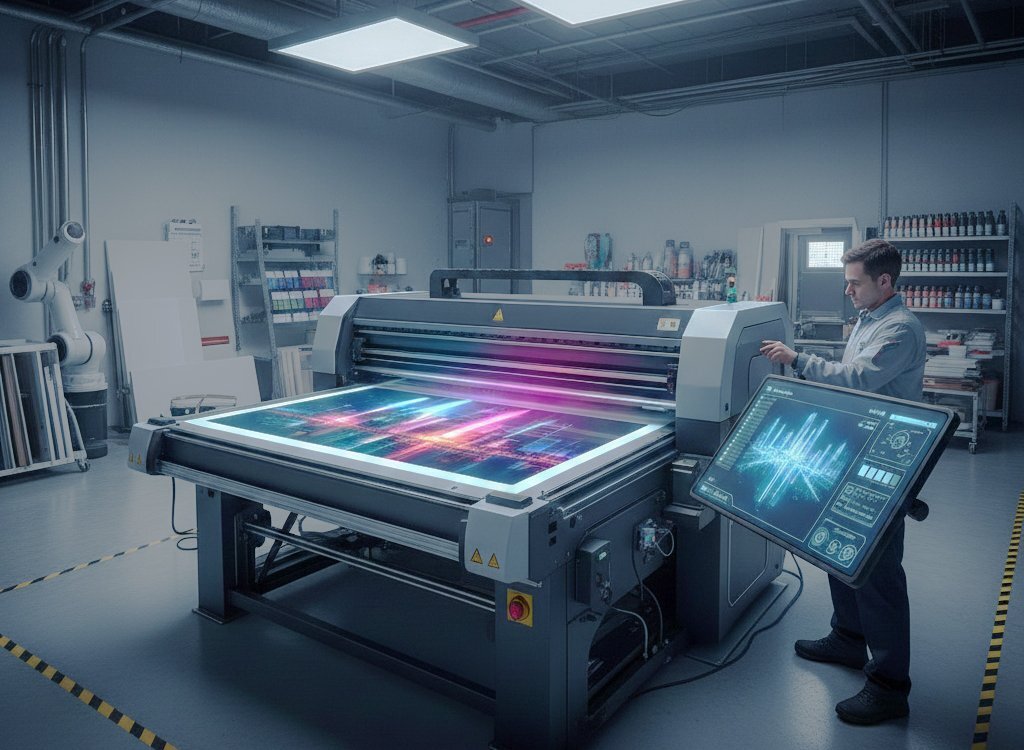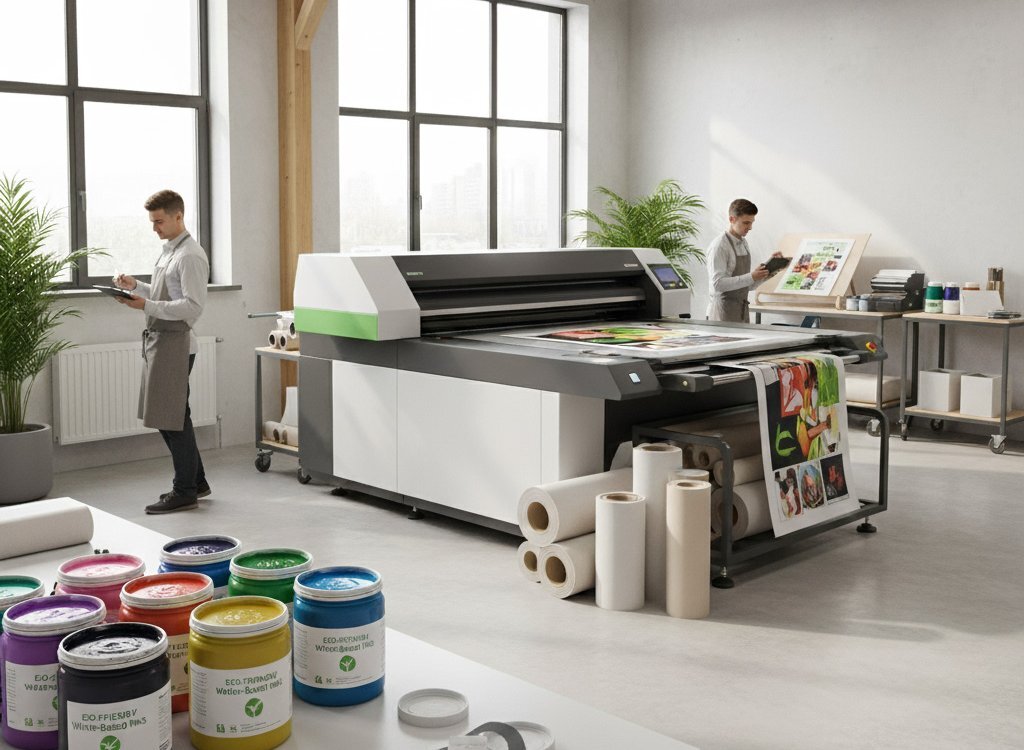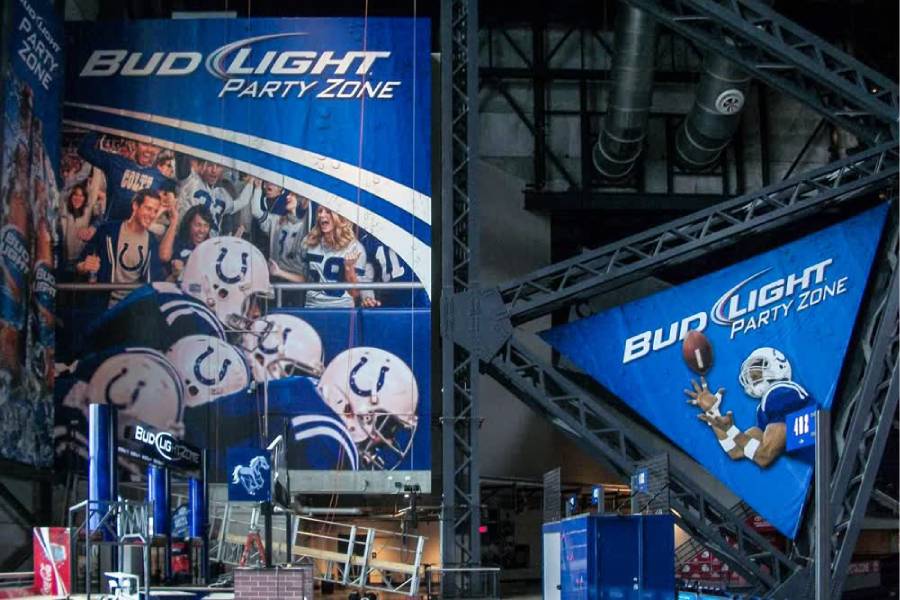Large Format Printing Material
Business owners are well aware of the importance of marketing. It makes their company stand out from the other businesses and contributes to their...
8 min read
Craftsmen Industries Nov 6, 2025 2:03:40 AM

Large format printing refers to printing on oversized surfaces like billboards, wall graphics, vehicle wraps, banners, and architectural signage. It’s a cornerstone of visual marketing because it gives businesses the ability to grab attention on a massive scale.
According to Smithers’ Global Print Report, the print market is expected to reach $834.3 billion by 2026, with large format printing making up one of the fastest-growing segments due to its widespread use in advertising, retail, events, and healthcare.
In 2025 and beyond, large-format printing is moving past traditional applications and embracing new technologies, sustainable practices, and personalized experiences.
In this article, we’ll cover the biggest trends shaping its future, challenges the industry faces, and where it’s headed next.
Large format printing is no longer limited to basic posters, banners, and billboards. In 2025, it’s evolving into a strategic branding tool that merges creativity, technology, and sustainability.
Businesses aren’t just using large format prints to grab attention; they’re leveraging them to create experiences, tell stories, and connect with audiences in ways that digital screens alone cannot achieve.
According to Grand View Research (2024), the global large-format printer market reached $9.11 billion in 2023 and is forecasted to keep growing through the end of the decade.
This growth reflects the increasing reliance on physical graphics in industries such as retail, healthcare, entertainment, and corporate branding to complement digital marketing.
Brands want faster, more flexible printing. Instead of mass-producing identical graphics, companies now choose short runs tailored to specific markets or events, keeping campaigns relevant and cost-effective.
Eco-friendly printing is now the standard. Businesses are adopting recyclable substrates, safe inks, and low-waste processes to meet consumer and regulatory expectations.
Print is merging with digital. Large format graphics are being paired with AR, QR codes, and online platforms to create interactive, hybrid brand experiences.
Large-format printing is no longer a supporting tool; it’s becoming a core element of brand strategy. Companies that embrace customization, sustainability, and hybrid media will set the pace in 2025 and beyond.
Large format printing provides tangible visibility that digital ads can’t replicate. Outdoor signage, trade show exhibits, and branded environments capture attention in high-traffic, real-world settings.
Unlike online ads, which can be skipped or blocked, large-format graphics occupy physical space and leave a lasting impression.

Technology isn’t just an aid in large format printing; it’s becoming the engine of new possibilities, pushing boundaries in speed, materials, and creative expression.
From the Keypoint Intelligence 2023-2028 Wide Format Print Forecast, we see the industry at an inflection point as companies are urged to adopt advanced technologies to stay competitive.
Technology doesn’t just increase efficiency; it expands what’s possible in large-format printing.
AI helps automate design and layout, reduces errors, and enables faster turnaround times by optimizing every stage of production.

Sustainability is now a non-negotiable priority in the printing industry. Customers, regulators, and brands all expect eco-conscious practices, making green innovation central to growth.
The printing industry is adopting greener practices across every stage of production. These trends highlight the shift toward eco-friendly materials, inks, and processes that reduce waste and emissions.
Brands that invest in sustainable printing not only reduce their environmental impact but also win long-term consumer trust.
Eco-friendly materials are recyclable, biodegradable, or derived from renewable resources, minimizing waste and long-term environmental harm.
Modern audiences want to feel that messaging is directed to them personally. Large-format printing is answering this demand with customized and localized solutions.
According to McKinsey’s personalization study, businesses that tailor their customer experiences drive 40% more revenue than competitors who don’t.
Personalization is no longer a luxury; it’s an expectation. Large-format printing is adapting with flexible solutions that make brand messages feel more relevant and targeted.
Personalized large format graphics help brands stand out in crowded spaces and build stronger connections with audiences.
Customization makes messages more relevant, improving engagement and creating stronger emotional connections with audiences.
Large format printing is not just for advertising; it’s expanding into industries where visual impact and branding are essential.
Examples:
This shows that large format printing isn’t a one-size-fits-all industry; it adapts across verticals.
Retail, events, healthcare, and entertainment are among the top industries using large format printing for visibility and engagement.
The future of large format printing lies in blending physical graphics with digital experiences.
This approach not only extends the reach of print campaigns but also creates deeper engagement by connecting audiences to interactive online content.
Large format graphics are becoming gateways to immersive digital journeys. From AR-powered signage to social-media-ready campaigns, brands are finding innovative ways to link the offline and online worlds.
This integration creates a seamless brand story where physical visibility leads to measurable digital engagement.
AR overlays interactive digital content on physical prints, creating an engaging experience that merges real and virtual branding.
Large format graphics are not just about visuals; they must withstand real-world conditions. From outdoor billboards to mobile exhibits, durability is what ensures prints remain effective long after installation.
According to MarketsandMarkets (2024), the outdoor signage market is projected to grow at a 6.3% CAGR through 2029, reflecting rising demand for long-lasting, weatherproof solutions.
Key durability features that keep prints performing
Strong graphics are built to last in any environment. These durability factors help maximize both impact and return on investment:
Durability ensures that large-format graphics continue delivering value, reducing replacement costs while extending the life of every print investment.
Durability depends on ink type, protective coatings, substrate quality, and how the graphic is displayed or maintained.
Design trends in large format printing are evolving rapidly as brands adapt to shifting consumer behavior and visual expectations. In a cluttered media landscape, strong design choices determine whether a graphic captures attention or gets overlooked.
New styles are setting the tone for effective large format communication. These trends focus on clarity, impact, and emotional connection:
Together, these design approaches help brands cut through visual clutter and leave lasting impressions, whether in retail, events, or outdoor environments.
Simple, bold designs with high-contrast elements perform best for large format printing, especially in outdoor or high-traffic settings where visibility is crucial.
The momentum behind large format printing is being fueled by growing investments in experiential marketing and out-of-home (OOH) advertising. Companies are using physical graphics to re-engage audiences in ways digital screens can’t replicate.
Several powerful trends are pushing the demand for large format graphics forward:
This growing demand means that print providers must scale capacity, adopt new technologies, and innovate faster to meet client expectations.
Growth is being driven by increased investment in OOH advertising, live events, and the demand for consistent branding across multiple platforms.
Even as demand rises, the large format printing industry faces challenges that could disrupt operations and reshape competitive strategies.
Several critical hurdles stand in the way of sustained growth:
Businesses that embrace hybrid approaches, sustainable practices, and automation will be better positioned to turn challenges into opportunities for growth.
The main obstacles are rising material costs, demand for faster production, and competition with digital displays.
The future of large format printing will be shaped by smart technologies, innovative materials, and sustainable practices. What was once seen as static advertising is quickly evolving into a dynamic, tech-driven medium with endless possibilities.
The industry is moving toward smarter, greener, and more interactive solutions. These shifts highlight where large format printing is heading:
These advancements point to a future where large format printing is more sustainable, efficient, and interactive than ever before, opening new opportunities for brands to connect with audiences.
The future of large format printing will be driven by AI automation, smart substrates, sustainable production, and the expansion of 3D-printed applications that transform graphics into interactive experiences.
Large format printing is evolving from static visuals into dynamic, eco-friendly, and technology-driven experiences. Businesses that embrace sustainability, customization, and digital integration will stand out in crowded markets.
If your brand is planning campaigns for events, retail, healthcare, or experiential activations, now is the best time to invest in innovative large format printing solutions.
At Craftsmen Industries, we specialize in large format graphics, architectural signage, and vehicle wraps that combine creativity with durability. With over 40 years of expertise, our in-house team handles design, engineering, and fabrication to deliver solutions that are on-trend, reliable, and built to last.
Ready to bring your vision to life? Contact Craftsmen Industries today to get started with a custom large format printing solution that will keep your brand ahead in 2025 and beyond.
Most outdoor prints last 3-7 years, depending on material, ink, and exposure.
For large prints, 150-300 DPI is recommended for clarity at scale.
Yes, fabric printing is popular for banners, trade show displays, and soft signage.
Large format generally refers to oversized prints beyond 24 inches, while wide format refers to printer width (18-100 inches).
No. Digital signage complements print but does not replace it; print remains more cost-effective and offers unmatched tangibility.

Business owners are well aware of the importance of marketing. It makes their company stand out from the other businesses and contributes to their...

Large format printing is an excellent way for companies to build brand visibility. However, businesses that offer wide format printing services may...

Large-format printing has become very popular among businesses that want to reach wider audiences and make their brand well-known. But many wonder...